Readership- how many people read the magazine )always higher than circulation)
Circulation- how many are sold
The Big Issue:
- People selling on the streets- homeless
- Charity organisation
- Neutral politically (pro human rather than economic/more left wing)
- Founded in 1991
- Social enterprise
- Gives seller a social network and purpose
- Sold over 200 million in UK alone since launch
- Can sell online with Big Issue shop
- Enables people to make a difference
Product Context:
- The set text is published in 2016, for its 25th anniversary
- Celebrities help out by being interviewed
- Tagline “A hand up not a handout”
- Wife is founder of Body Shop
- Funded mainly with advertising
- Purchased on streets or online, but not in shops
Economic context:
- Earns £100,000 a week
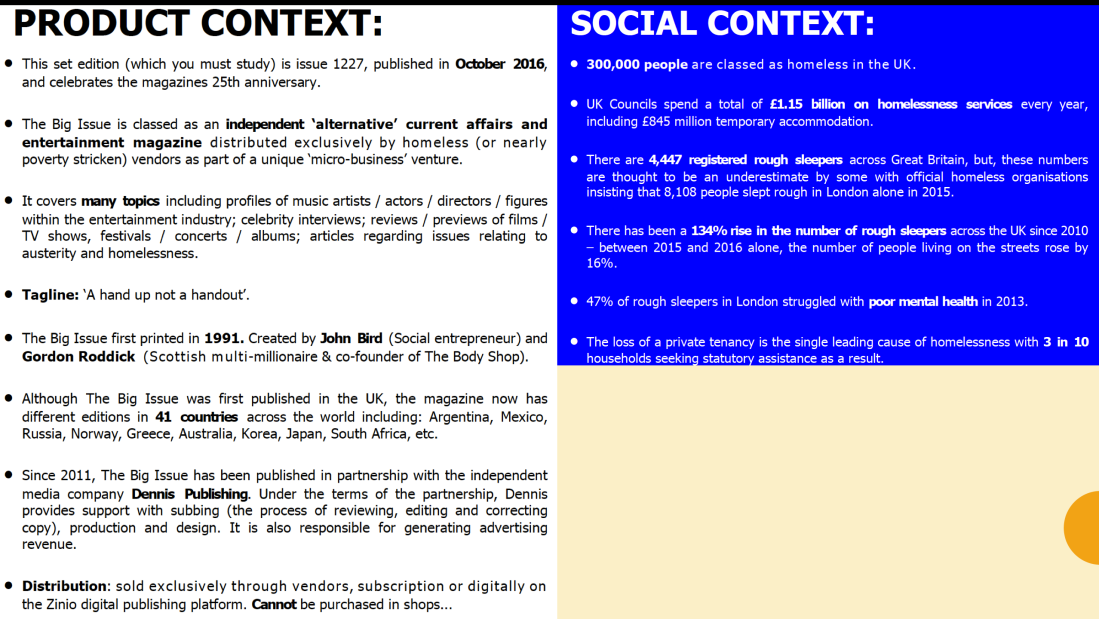
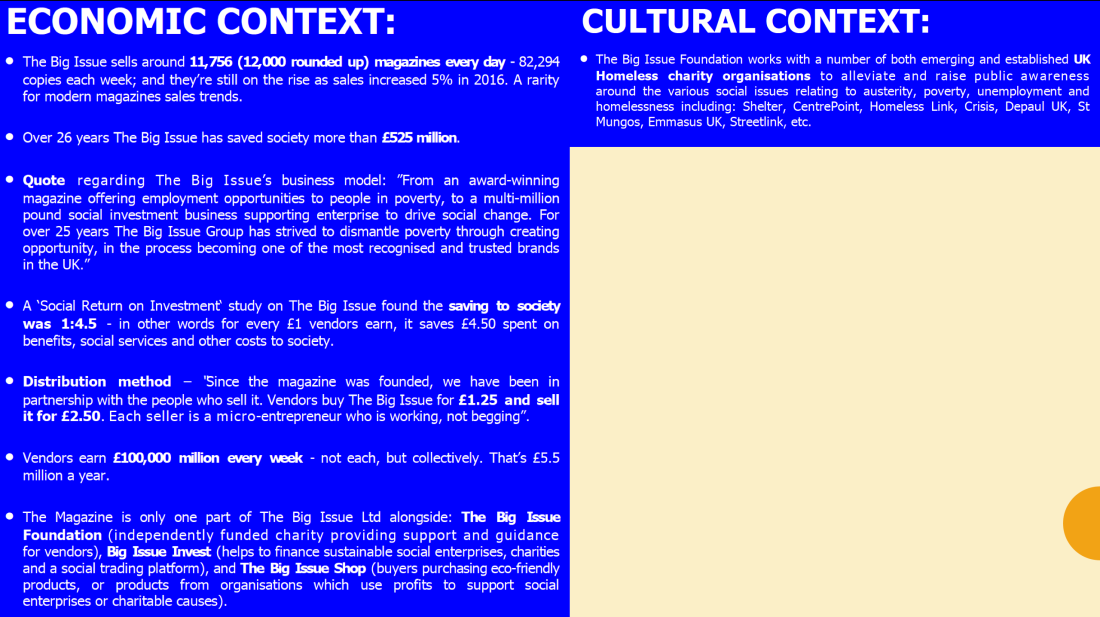
Audience:
- Socially conscious
- Social grading: A,B,C1,C2
Analysis on front cover:
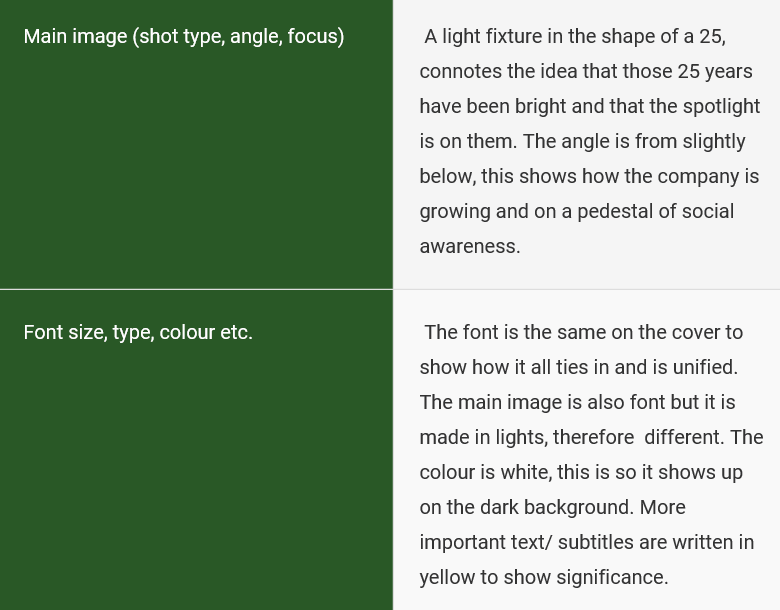
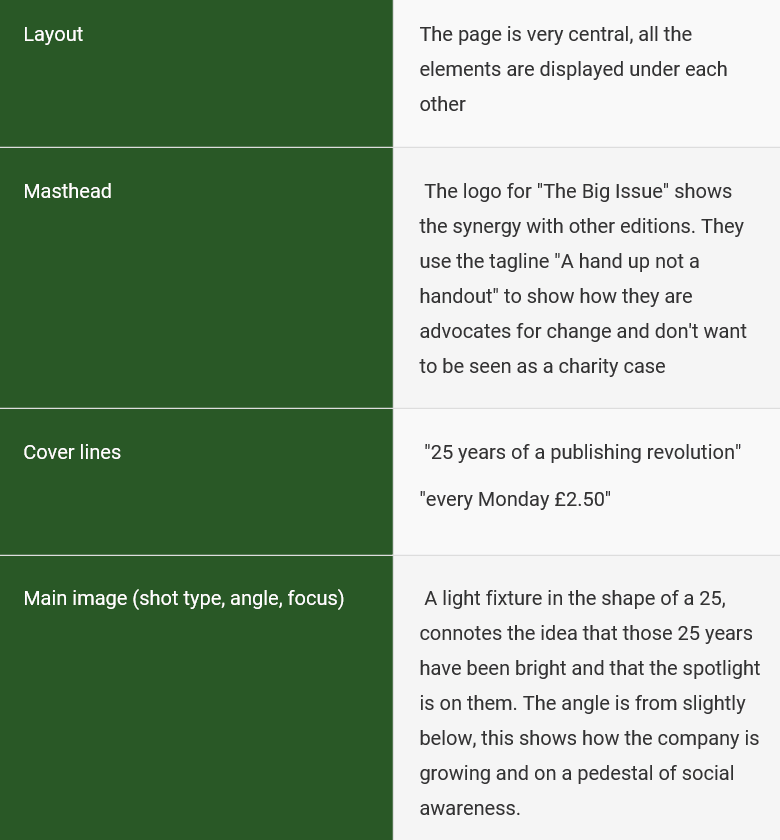
- Subverts conventions as this is a ‘special anniversary edition’ announced at the top of the page
- Masthead: Masthead framed in a box (familiar logo used for Big Issue magazine, foundation etc.), sans serif font, upper case, grey – plain, serious.
- Strapline (under masthead box) ‘A hand up not a handout’ – reflects the ethos of the street magazine and links to the campaigning and socially active aspects of the foundation
- Main image: not a person (TBI often features a celebrity on the cover, but sometimes uses graphics) – attention-grabbing ‘25’ in lights, bright colours, stars – connotes success, celebration, huge achievement ‘Publishing Revolution’ – hyperbole, anchors the main image- reinforces the success story of the magazine
- ‘Publishing Revolution’ – hyperbole, anchors the main image – reinforces the success story of the magazine.
- ‘Celebrating with…’ – long list of celebrity endorsers named, reinforcing the positive message and sense of pride – opinion leaders
- ‘PLUS THOUSANDS AND THOUSANDS OF VENDORS’ – upper case, in yellow to stand out/appeal – message that the vendors are the real success story.
- Lack of conventional cover lines due to the ‘special edition’.
Roland Barthes would say that….
“The ’25’ in LED lights creates a ‘Hollywood/Broadway’ sense of glitz and glamour which promotes an exaggerated perception of success and achievement. ”
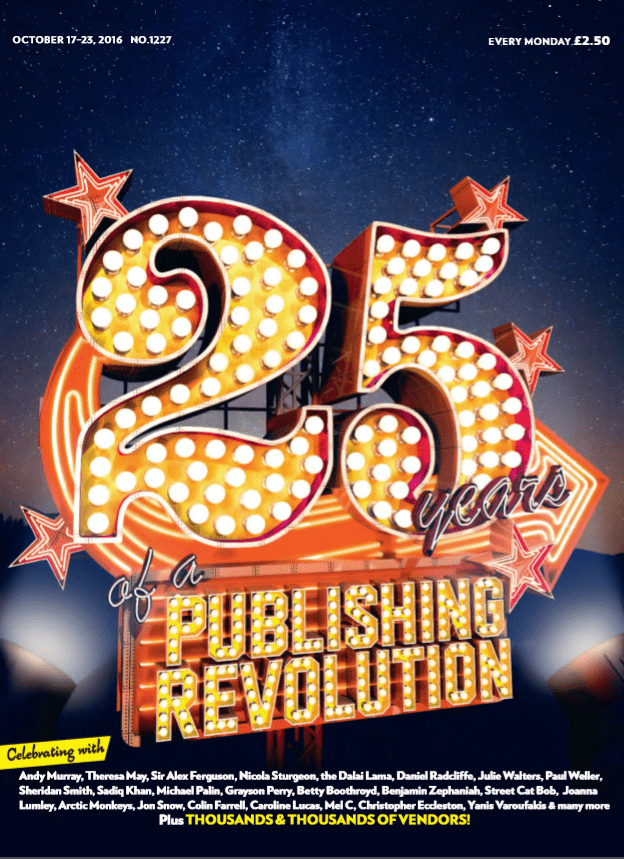
Compare to Vogue:
- Vogue is a mainstream magazine and The Big Issue is an alternative magazine, made by a small company.
- The main image on Vogue is centred around beauty, women and fashion, this is similar to the contents of the magazine.
- The Big Issue in comparison has no people on the cover, but lights suggesting it may have a wide variety of content that can’t be summarised over the 25 years
- The similarities is that both magazines rely on celebrity endorsement, Vogue uses an image of Sophia Loren whereas The Big Issue uses a list of all the celebrities they’ve featured in the 25 years, this gives a star appeal to the magazine
- The use of harsh lighting and dark backgrounds is another similarity.
Vogue Contents page analysis:
- Magazine contents pages are very useful for analysing codes and conventions, and also contexts and target audience.
- Language- use of alliteration to appeal to audience, repetition of key words/phrases, play on words to link feature articles.
- Codes and conventions- Features on fashion, style, culture, food/entertaining, travel-typical of women’s magazines.
- TA- fashion item ‘op art’- art link presupposes cultures, educated reader
- TA-Assumed interests- fashion, entertaining, culture, image
- TA-Assumed to have high disposable income- consumerists focus (shopping, trends, travel. cruises
- TA- Cultural competence- assumes understanding of “dolce Vita”- Italian for ‘good life’, also a film
- Context- focus on ‘exclusive’ places- Spain, Abu Dhabi, Deauville- a time when international travel was becoming accessible but still quite new and preserve a relatively wealthy.
- Context- Beauty-‘sun-tanning’ article- culturally acceptable in the 1960s
- Context- Fashion reflecting the culture and trends of the 60s- pop art/ op art
- Context- Female Journalists- professional roles- not necessarily replicated in the assumptions about readers.
The Big issue – Daisy, Harry, Kate 5Feature Article Analysis WS (Ballantyne, Grace) 4Feature Article Analysis WS (Garthwaite, Thea) 3Feature Article Analysis WS 2Feature Article Analysis WS 1Vogue analysis